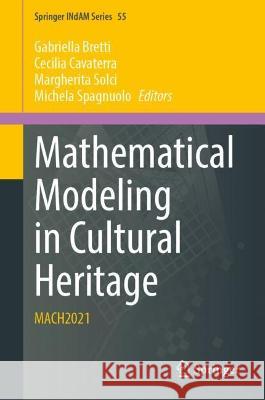Mathematical Modeling in Cultural Heritage » książka
topmenu
Mathematical Modeling in Cultural Heritage
ISBN-13: 9789819936786 / Angielski / Twarda / 2023
Mathematical Modeling in Cultural Heritage
ISBN-13: 9789819936786 / Angielski / Twarda / 2023
cena 726,29
(netto: 691,70 VAT: 5%)
Najniższa cena z 30 dni: 655,41
(netto: 691,70 VAT: 5%)
Najniższa cena z 30 dni: 655,41
Termin realizacji zamówienia:
ok. 22 dni roboczych
Dostawa w 2026 r.
ok. 22 dni roboczych
Dostawa w 2026 r.
Darmowa dostawa!
This book collects contributions presented at the INdAM Workshop "Mathematical modeling and Analysis of degradation and restoration in Cultural Heritage–MACH2021", held in Rome, Italy in September 2021. The book is focused on mathematical modeling and simulation techniques with the aim of improving the current strategies of conservation and restoration in cultural heritage, sharing different experiences and approaches.
The main topics are corrosion and sulphation of materials, damage and fractures, stress in thermomechanical systems, contact and adhesion problems, and phase transitions.











